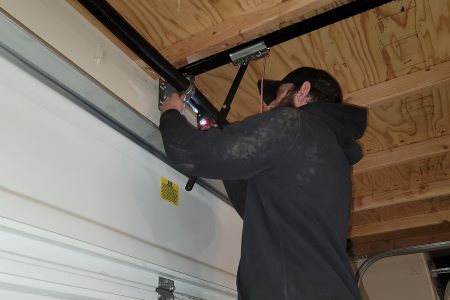Usual Garage Door Problems and Just How to Deal with Them
Garage doors are important for both security and comfort, yet they frequently present a variety of usual issues that can discourage house owners. While some concerns might show up simple to deal with, others might require an extra nuanced understanding of garage door technicians.
Noisy Garage Door Procedure
A loud garage door operation can be a considerable resource of nuisance for house owners, typically suggesting underlying mechanical issues. Such disturbances might stem from different reasons, including damaged rollers, loose equipment, or inadequate lubrication. Identifying the resource of the noise is vital for effective resolution.
Over time, these components can degrade, leading to grinding or squealing sounds as the door steps. Furthermore, loosened bolts or screws in the door system can produce rattling noises throughout procedure.
An additional adding aspect is inadequate lubrication of the door's moving parts. Using a top quality lubricant to the tracks, springs, and rollers can significantly diminish rubbing and sound. Home owners should perform this maintenance periodically to preserve optimal efficiency.
Lastly, the garage door opener may likewise create noise because of its age or mechanical problems. If the sound persists regardless of addressing other variables, speaking with an expert for a detailed examination and prospective fixing might be essential.
Door Will Not Open Up or Close
Experiencing a garage door that won't open or close can be exceptionally frustrating and often signals a malfunction within the system. Numerous aspects can add to this concern, and recognizing the source is crucial for effective resolution.

Next, evaluate the security sensing units located at the base of the door. These sensors can become misaligned or obstructed by particles, preventing the door from running correctly. Clean the sensors with a soft towel and guarantee they are lined up.
Furthermore, the garage door's inner parts ought to be examined. Concerns such as a damaged springtime, worn-out rollers, or a harmed opener can hinder activity. If any elements appear to be harmed, it might be suggested to seek advice from an expert for repair work.
Misaligned Tracks
(One Call Away)Misaligned tracks can significantly interfere with the smooth operation of a garage door, resulting in functional failings such as uneven movement or complete immobilization. This issue generally occurs because of a variety of elements, including deterioration, unintended effects, or incorrect installation. When the tracks are misaligned, the rollers can not move openly, which not just strains the motor yet additionally presents security risks.
If you notice any type of discrepancies, it is vital to address the problem quickly. Thoroughly touch the track back into its correct placement using a rubber mallet or a similar device, ensuring it is straight and level.
Regular maintenance, consisting of cleaning up the tracks and making certain rollers are in great problem, can prevent future misalignments. By attending to read review misaligned tracks without delay, you can restore the capability of your garage door and improve its long life.
Broken Springs
Among the numerous components of a garage door system, broken springtimes are among one of the most usual concerns that can significantly hamper its performance. Garage door springtimes are essential for balancing the weight of the door, allowing for smooth opening and closing. When a spring breaks, it can result in a door that is difficult to operate or, in many cases, completely inoperable.
There are 2 primary kinds of springtimes: torsion springtimes, which are placed over the door, and extension springs, discovered on either side. Indications of a damaged spring include a door that won't open up, a noticeable void in the springtime, or a loud sound throughout operation. Attempting to operate a garage door with a broken springtime can create more damages to the door or the opener.
Repairing damaged springs is not a do it yourself task; it needs specialized tools and proficiency due to the high tension involved. It is a good idea to get in touch with an expert specialist who can securely change the springs and guarantee the door is correctly balanced. Normal maintenance and inspections can aid stop spring failures and expand the life-span of the garage door system.
Remote Issues

If the remote still stops working to run, examine the garage door opener to guarantee that its sensors are tidy and unblocked. Dust, debris, or misalignment may impede the signal transmission between the remote and the opener.
Disturbance from various other electronic gadgets can likewise hinder remote performance. Make certain that neighboring tools, such as cordless routers or cordless phones, are not creating interruptions. garage door service. If interference is thought, attempt moving these tools even more far from the garage door opener
Sometimes, the remote may need to be reprogrammed. Consult the manufacturer's standards to reset the remote and integrate it with the garage door opener. If all else stops working and the remote continues to malfunction, think about consulting an expert technician for a thorough assessment and potential replacement of the remote or opener.
Conclusion
(Dependable Results)In summary, usual garage door problems can substantially affect performance and safety and security. Positive maintenance and timely repair services can ensure ideal efficiency and longevity of garage doors.